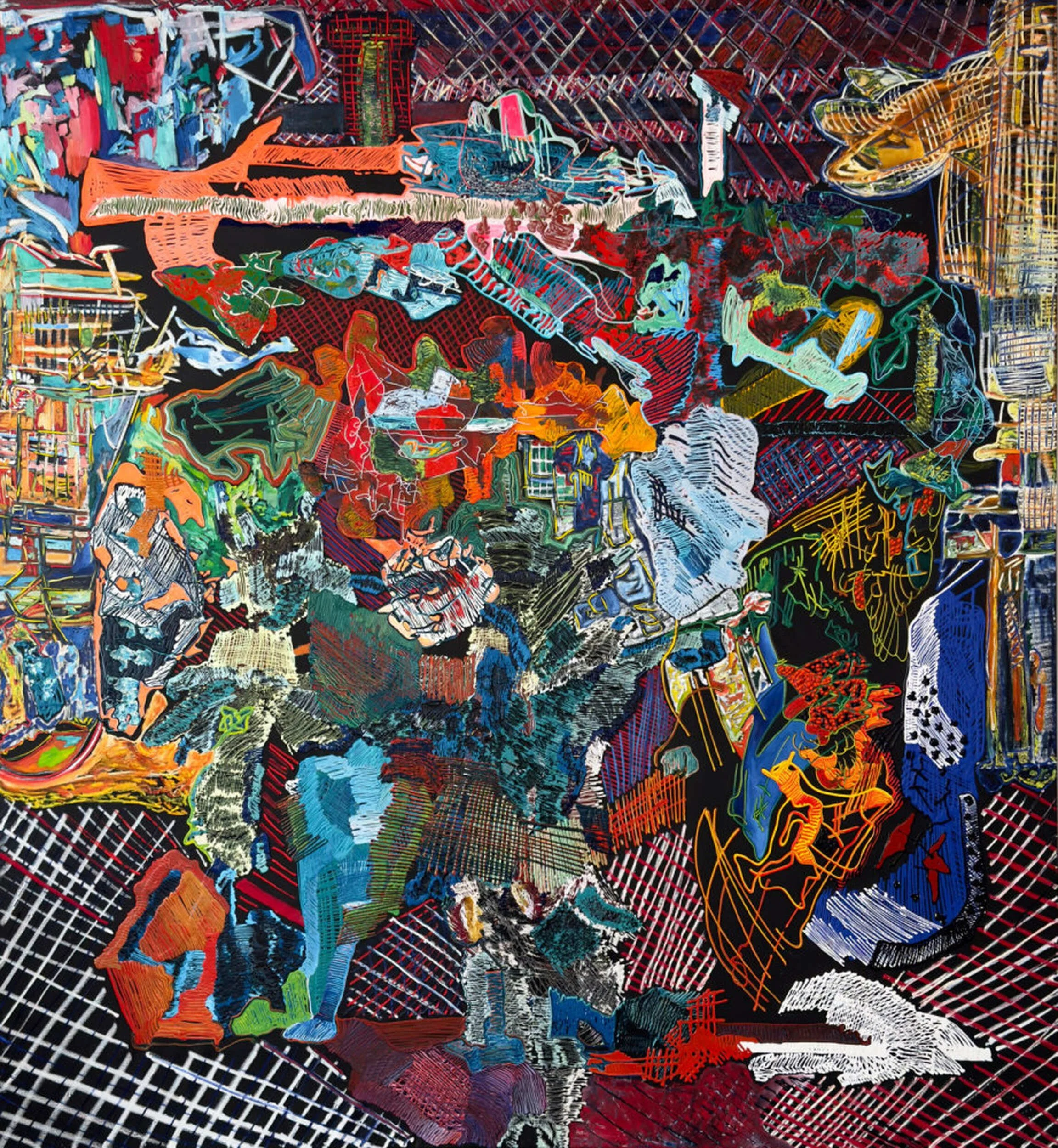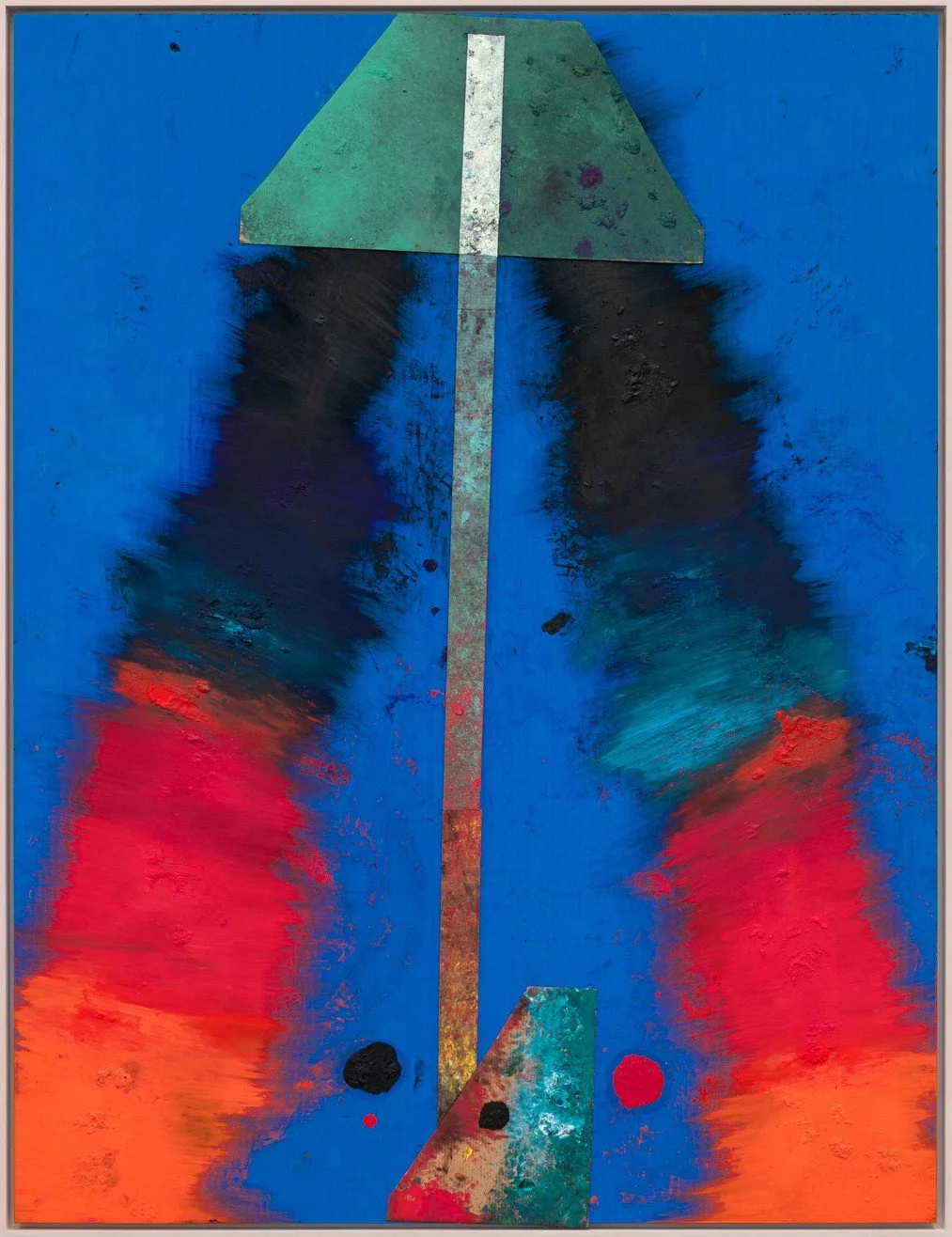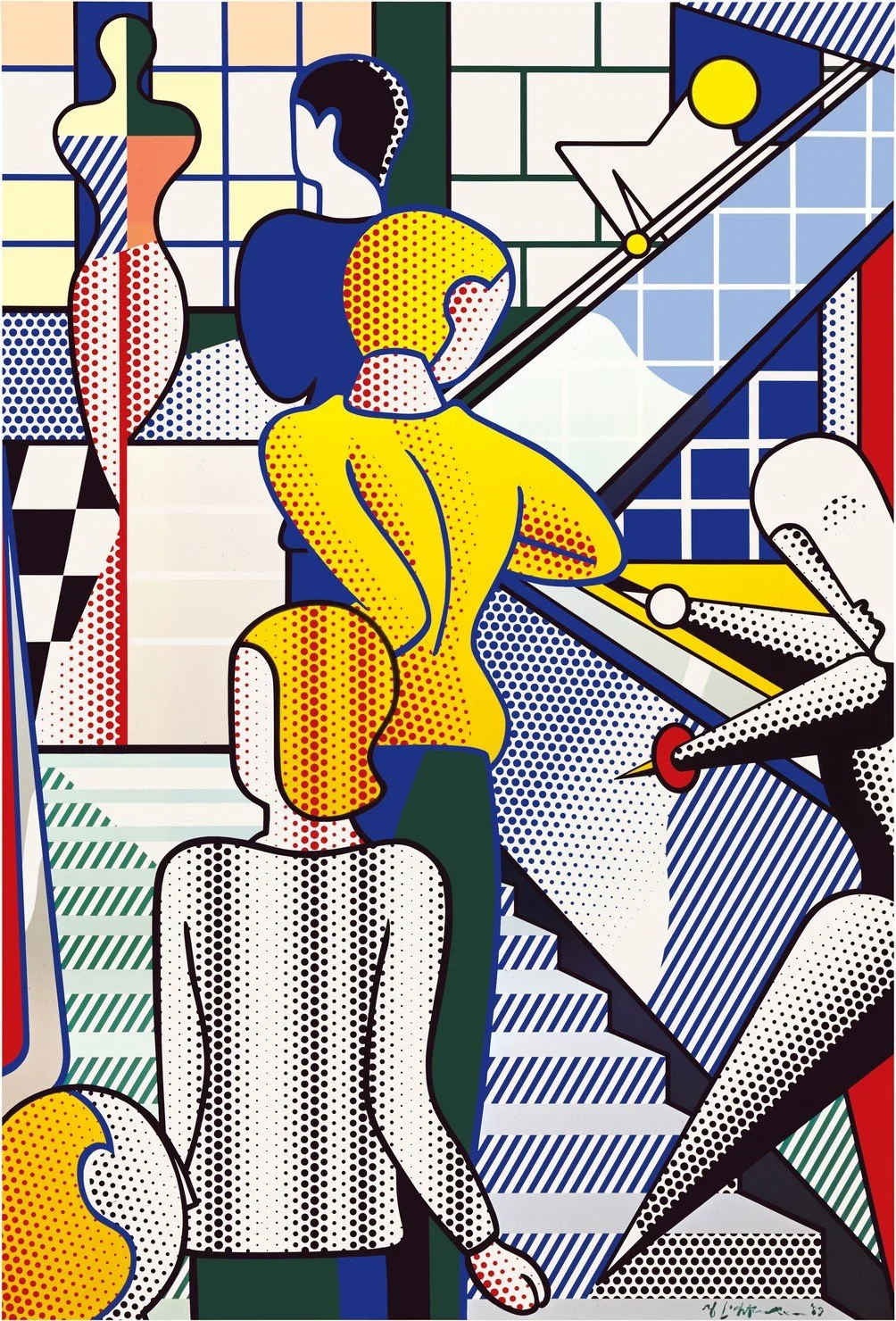Leelee Kimmel
“The Wilds and the Shore”
New York, 39 East 78th Street, Floor 2
Kimmel continues in the refinement of a certain sort of abstract painting. But that word seems uneasy, correct but subtly off. What sort of refinement is this, or elaboration, or even “study”— the anodyne quality of that word is deliberate. Kimmel is outside of fashion: not so much as a whisper of personal experience or life story, no appeal to identity, that skeleton key to all living myths and histories, omnipresent and deader than the Rev. Casuabon’s hopeless attempt to find the key to all mythology. But keeping within the conspectus of the Victorian novel, nothing is more perversely animated, more plastic with eldritch innovation, than what is dead: Dracula, Frankenstein, and a comically replete world of unquiet spirits. Kimmel would be uninterested in pursuing the Matisse idea of art, that beautiful armchair — but no one shirks Matisse, that’s just wrong and rude. But she doesn’t do that trip. Luxe, calme, et volupté — well Kimmel’s paintings have a luxurious quality, even a voluptuous one; but they’re very seldom calm.
Kimmel works within a very well known history of postwar painting: Abstract Expressionism. And yet her paintings don’t look much or anything like those produced by First- and Second-generation Abstract Expressionists, the habitués of the Cedar Tavern, the gristle and sinew of the Tenth Street School. For such a stereotypically “masculine” and “tough guy” stratosphere, a lot of the guys underperform as *real men*. Jackson Pollock: a male hysteric with all manner of expressed of repressed and mockingly, amusingly displayed homoerotic “tendencies”. Franz Kline: adorable but likewise a patent mess. That these paragons of Action Painting and The Triumph of American Painting aren’t regular guys is hardly surprising. They’re self-created edifices of compromised, failed, hopeless masculinity if anything, but how vulgar to talk this way. The guys guys in this orchidaceous-hot realm were the women: Lee Krasner and Joan Mitchell, Elaine de Kooning and Grace Hartigan: they all unsex themselves after the manner of early radical feminist Lady Macbeth. Perhaps it’s fitting that among contemporary painters, certain women are their most vital descendants, keeping the shop of the forties and fifties open today and ever young: Julie Mehretu, Cecily Brown, Jacqueline Humphries, Laura Owens, and Kimmel; resisting the vulgar or maybe just way overdone and shopworn identity ideology of making and being. Unsexed. Not having it. Defiantly pissed off.






